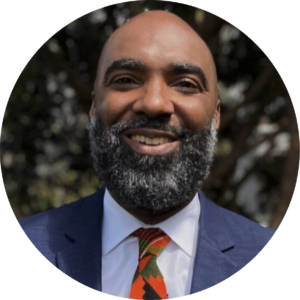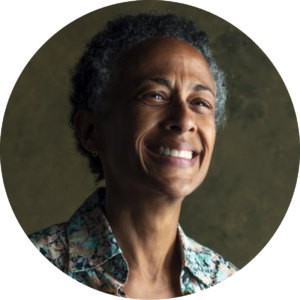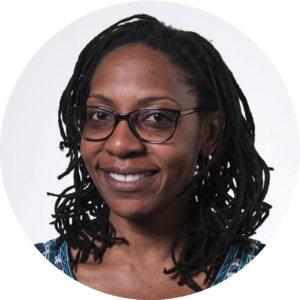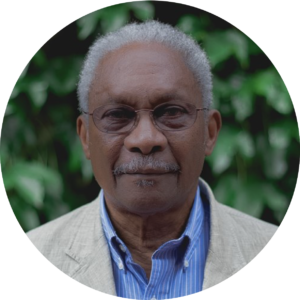By the CUNY Urban Food Policy Institute
Every summer the Institute looks back at some of the most-read newsletter articles and highlights them in an omnibus issue before the start of the new academic year. This summer, we launch a new component of this effort drawing also on our past urban food policy forums. In this first edition, we elevate the voices and work of some of the Black food policy thought leaders, practitioners, staff members, and activists who have contributed key perspectives to these urban food policy debates. The statements included below have been organized in various food-related themes. We consider these messages as a source for lessons for everyday practice, advocacy, and the future of food policy in New York and elsewhere.
Nutrition
Over the past fifteen years, New York City has made progress in advancing key healthy nutrition policies and programs seeking to lower the rates of adult overweight and obesity. Yet, childhood and adult overweight and obesity rates have not decreased and some of the most impactful policy tools — such as soda taxes — are still missing from the City’s health policy toolbox. Moreover, the wide racial and ethnic inequities in diet-related diseases have barely changed. At the Institute’s forum Food Policy in New York City Since 2008: Lessons for the Next Decade on February 21, 2018, Dwayne Wharton, Co-Founder & Senior Advisor at Just Strategies and Former Director of External Affairs at The Food Trust, highlighted some of the key lessons from the soda tax campaign in the City of Philadelphia — the first city to pass such tax in the US.

“The lesson I would like to talk about in Philadelphia is around the soda tax. We passed it two years ago, but it was not from a health argument, it was about economic stimulation and it was about anti-poverty. The funds that were gained from the tax were used for 2000 Pre-K slots. Again, we look at these big problems and poverty being the biggest, the way to break out of poverty is providing that foundational education for kids so that they can have better outcomes in life.” — Dwayne Wharton, Co-Founder & Senior Advisor at Just Strategies; former Director of External Affairs, The Food Trust
Additional resources
- Twitter: @DwayneWharton, @StrategiesJust
- https://www.juststrategies.org
- https://www.phillyblackgiving.org/committee
- New Jersey Capitol Report: Interview with Dwayne Wharton
As important as they are, healthy nutrition programs alone can do only so much to counteract the effects of predatory and racialized marketing. Countermarketing advocacy and policy is one concrete strategy for moving beyond healthy nutrition education alone. The public event and training on countermarketing for community-based organizations, which took place on July 24, 2017 and was led by Charita Johnson James, Institute Director of Youth and Community Development, offers insights into the importance of this approach for New York City and the key role youth play in it (see also the Institute’s Youth Food Countermarketing Hub).

“Why is food countermarketing important? In New York City, the areas with the highest rates of diet related diseases—such as obesity, diabetes, and hypertension—are the same areas that experience the most poverty, have the most sugary drink consumption, and the lowest fruit and vegetable consumption. […] This shows that we still have a lot of work to do as public health professionals, as food justice advocates, as healthy food advocates. And these neighborhoods are homes to tens of thousands of young people and their parents. […] Research has shown that Black and Latinx youth receive a “double dose” of unhealthy marketing compared to their Caucasian peers. Countermarketing gives youth and others agency, autonomy, and authority over what they consume and a voice to fight back against predatory big food companies. We have to work to get policymakers, and people who have official leadership in our communities, on board with this and behind countermarketing initiatives.” — Charita Johnson James, Director of Youth and Community Development, CUNY Urban Food Policy Institute, and Founder of My SoulFull Nutrition
Additional resources
- Instagram: @mysoulfullnutrition
- https://www.instagram.com/mysoulfullnutrition
- https://youthfoodcountermarketing.org
- The Sylvia Center, Teen Culinary Apprenticeship Program: Interview with Charita Johnson James
- Engaging Young People in Countermarketing Unhealthy Food: A Toolkit from the CUNY Urban Food Policy Institute and the East Harlem Youth Food Educators Project
Food safety is rarely the center of conversations about food justice. Yet evidence suggests that food safety disparities exist and at times overlap with racial and socioeconomic ones. Just food systems exist when communities have equal access to foods and meals that meet the highest food safety standards. This principle is part of the policy recommendations which Aprielle Wills, Doctoral Fellow at the Institute, presented at the Institute forum on food safety in New York City on March 26, 2019 (see also the report Eating Without Reservation: Ensuring Food Safety in New York City).

“Given the importance of equity in public health and in New York City, we should have a way of assessing if the food system is equitable for all groups regardless of individual and community level resources.” — Aprielle Wills, Doctoral Fellow, CUNY Urban Food Policy Institute
Additional resources
- https://www.cunyurbanfoodpolicy.org/fellows
- Eating Without Reservation: Ensuring Food Safety in New York City
- Public Presentation of the Report
Food security on campus
Before the COVID-19 pandemic, the 2019 Food Metrics Report for New York City showed that there were 1.2 million New Yorkers who are food insecure in 2017. As of May 2020, this number has been projected to surpass 2 million. Because this figure is closely tied to job security, it is still unclear how deep the reverberations from the pandemic will reach before the economy fully recovers. Our Institute has long focused attention on food insecurity among CUNY’s 274,000 students. Our surveys show that food insecurity rates at CUNY are higher among African American and Latinx than white students (see also The State of Food Security at CUNY in 2020).
The voices of some of the Black thought leaders and food security advocates among CUNY students, faculty, and staff who participated in some of our public forums on the topic — The State of Food Insecurity at CUNY in 2020 on May 21, 2020 and Cutting Edge Food Research at CUNY on January 29, 2019 — provide insights into the problem and its solutions.

“The federal government and the state government play such a huge, huge role in everything that we are trying to do to fight food insecurity. CUNY can do some things…but I think now is the time that we start talking to our students about voting. Now is the time that we start talking to our students about the census, letting them know that there are opportunities here that can provide these resources, give us representation at the federal level, get us more civically engaged in this process of combating food insecurity, because higher education is fought at that level, and I think we need to be united and take the fight to that level.” — Timothy Hunter, University Student Senate Chairperson and Student Trustee on the CUNY Board of Trustees
Additional resources
- Twitter: @thunter_tim
- https://www.cuny.edu/about/trustees/the-board-of-trustees
- Public Talk on the State of Food Insecurity at CUNY in 2020
- The State of Food Security at CUNY in 2020: An Assessment and Recommendations

“I always advocate for resource guides on every campus because we have a lot of students that are homeless and undocumented. After they graduate, they no longer can access our resources including our pantries and the myriad of services at Single Stop, because they are only for CUNY students. It’s like we abandon them at graduation, and they have nowhere to go. They don’t have the resources and don’t know where to find them. A resource guide for students that are currently at CUNY and graduates would be good first step as we put systems in place that facilitate ongoing support. We need to move on from only the pantries to a more holistic approach to food insecurity.” — Karla Ignacio, Food Justice Leadership Fellow, CUNY Urban Food Policy Institute, and former student Food Security Advocate at Hostos Community College
Additional resources
- #CUNYFoodSecurityAdvocates
- Healthy CUNY and CUNY Food Security Advocates at the #RealCollege Conference
- Public Talk on the State of Food Insecurity at CUNY in 2020
- The State of Food Security at CUNY in 2020: An Assessment and Recommendations

“Here [at the CUNY Bronx Community College Food and Garden Club] is where we address food insecurity, because it’s a hands-on learning experience…you can get students to a certain point where they’ll go home and make changes based on what you say, but our students are high risk students for [diet-related] diseases… they are going to be future health educators, they’re going to be future nurses, they’re going to be future nutritionists, and they are living in high risk communities, and they’re going back to that community as role models; so it’s important to train the students to be role models and to change and adopt healthier eating habits for themselves, their family, and their community.” — Charmaine Aleong, RN, RD, MS, MSN, Full Professor and Dietetic and Nutrition Coordinator, Department of Health Physical Education and Recreation, Bronx Community College
Additional resources
- A Complementary Teaching Activity for Food Security and Healthy Eating Behavior Change in a Community College
- The CUNY BCC the Food and Garden Club
Economy
Equitable food economies hinge on narrowing the stark wealth disparities that for generations have persisted along racial, ethnic, and gender lines. Food justice scholars have rightfully insisted that access to income and access to wealth are not the same thing. Ensuring that the allocation of resources is not race neutral is one strategy for closing these gaps. On March 25, 2020, during the Institute’s online forum on equity and food systems planning for the Tri-State region, Kolu Zigbi, an Independent Consultant and former Program Director for Sustainable Agriculture and Food Systems at the Jessie Smith Noyes Foundation, spoke about the importance of designing future planning processes with this in mind.

“I think there is a shared feeling that having systems that operate primarily based on market metrics of profit and profitability is not securing our welfare in times of crisis. And there is a growing sense that those who are least served by a system and are most vulnerable, present vulnerabilities for everyone… This idea of justice is not just because we want to be good people but because we are all interdependent… A key consideration for planners is that the default ways that we address creating strategies for the allocation of resources for what needs to happen tend to be race neutral. In general, those don’t get us towards greater equity. We need to be really conscientious about having parallel processes that do.” — Kolu Zigbi, Independent Consultant and former Program Director for Sustainable Agriculture and Food Systems, Jessie Smith Noyes Foundation
Additional resources
Fair labor and food procurement
Food service and farm worker jobs are among the lowest paid occupations and among those with least stability and protections for employees. These highly racialized inequities not only deepen economic and wealth divides in the food system but also keep in place the flawed notion that urban farming land uses in the city are not the “highest and best use of land” compared to other uses and therefore are expendable. The talk by Onika Abraham, Director of Farm School NYC, at the June 26, 2019 Institute forum on Charting the Future of Urban Agriculture in New York City, speaks to these structural inequities and the task for future urban agriculture policy to secure fair, dignified, and secure compensation for urban farmers in the city.

“The act of farming under systemic oppression and racism is an act of resistance. We need to reframe the way we talk about how people do resistance work in the City to include the critical part urban agriculture plays. […] Across the board, farm labor is incredibly under paid in this City. It’s usually heavily subsidized by volunteer labor, and it is not often a sustainable career. And that’s something that an urban agriculture policy really needs to deal with. If we value the environmental, cultural, financial and ecological services these spaces are bringing to our communities, we need to pay for them… and not just seasonal labor, but year-round, benefit-laden, real living wage labor with a pathway to true ownership, autonomy and sovereignty.” — Onika Abraham, Director of Farm School NYC
Additional resources
- Twitter: @FarmSchoolNYC
- https://www.farmschoolnyc.org
- https://www.instagram.com/farmschool_nyc
- https://www.realorganicproject.org/2019-symposium-onika-abraham
Additionally, new approaches to public procurement of food can address not only labor inequities but also other dimensions of racial injustice. In his presentation on the future of food policy at the 2020 Food Systems Summit: The Future of Food Policy, jointly organized by the Institute and the Richman Law Group on May 28, 2020, Craig Willingham, Deputy Director of the Institute, spoke about the untapped strategic potential of values-based procurement, such as the Good Food Purchasing Program, to change multiple social determinants of health in tandem.

“The Good Food Purchasing Program [GFPP] is focused on values-based procurement and baking in values as part of the ways in which we understand what the city should be doing and how it should be spending its money. It really is an important way to think about how we can transform this world using public dollars and it also provides a window into what we might see as an effective strategy for changing the food system for the better in the future. […] Thinking about the GFPP in terms of the social determinants of health is one effective way to talk about why the GFPP is important. […] Depending on where you live, it can radically change what you are able to access, how public money is being spent, and the overall health of a particular population. It’s important to understand that the five value categories [local economies, environmental sustainability, valued workforce, animal welfare, nutrition] can be a driver for changing the social determinants of health, particularly when you are talking about a municipality like New York that’s spending hundreds of millions of dollars a year on food for its residents.” — Craig Willingham, Deputy Director, CUNY Urban Food Policy Institute
Additional resources
- Twitter: @CraigWillingham
- A Guide to Growing Good Food Jobs in New York City
- Bringing the Good Food Purchasing Program to NYC: Barriers and Facilitators for Select Institutions
- The CUNY Urban Food Policy Institute Guide to Food Governance in New York City
Governance
Strong food governance rests most solidly on deep food democracy — where the voices of the communities most affected by the injustices of the current food system not only participate but lead problem-setting and problem-solving discourses. Just food governance mechanisms ensure that Black and Brown Americans, Indigenous populations, and immigrant communities have access to the decision-making processes and their input is translated in concrete, equitable actions. In this approach, the merits of those actions are evaluated through their impact on racial equity, among other values. In their talks at the Institute’s forums on Food Policy and the 2020 Elections: What to Put on the Table on November 29, 2018 and Evaluating Community Food Programs: What do we know? What do we still need to learn? on March 23, 2017 respectively, Dennis Derryck, Founder & President of the Corbin Hill Food Project and Afia Bediako, Wellness Leader, Independent Consultant, and former Community Health Advocate at Bedford Stuyvesant Restoration Corporation, provide insights into some of the specific policy and programmatic steps that institutions in New York City can take to translate the principles of food democracy in practice.

“One of the things we must think about as we think of new policies really has to do with what does this legislation need to look like. […] What we’re really talking about is the shifting of decision-making power. And if we don’t think about shifting decision-making power then I don’t know what it means for democratizing the whole area here. The other piece of that dimension is we have to intentionally filter these policies and their impacts and their measures around racial equity.” — Dennis Derryck, Founder & President, Corbin Hill Food Project
Additional resources
- Twitter: @corbinhillNYC
- http://corbinhill-foodproject.org
- Beyond Getting Food to New Yorkers in Need
- Profile: Corbin Hill Food Project
- Corbin Hill Road Farm Share: A hybrid food value chain in practice

“It’s a priority to build community leadership—people who might have been volunteers in this work [evaluating community food programs] may become staff, in the lifting up [of racial equity in the evaluation of community food programs] and how people are engaged in the process… It has been done in some ways [at Bed Stuy Restoration Development Corp.]; one thing is considering who staff is and prioritizing staffing from people who are Bed Stuy residents and longtime participants in the work. Even with the community food program specifically… an example is our farmshare coordinator now is somebody who was a parent at the Head Start that the farm share program began at, and now she’s paid staff at Restoration leading the farm share program… It’s a value for residents and people…whose voice isn’t always valued, to be valued and be acknowledged [for their]…lived experience and better ability to do the work we’re trying to do because of that experience.” — Afia Bediako, Wellness Leader/Independent Consultant and former Community Health Advocate, Bedford Stuyvesant Restoration Corporation
